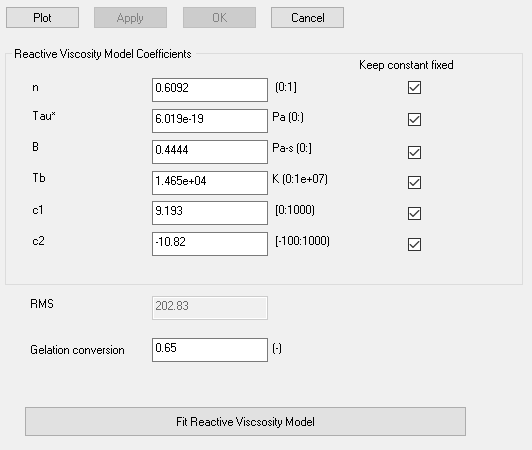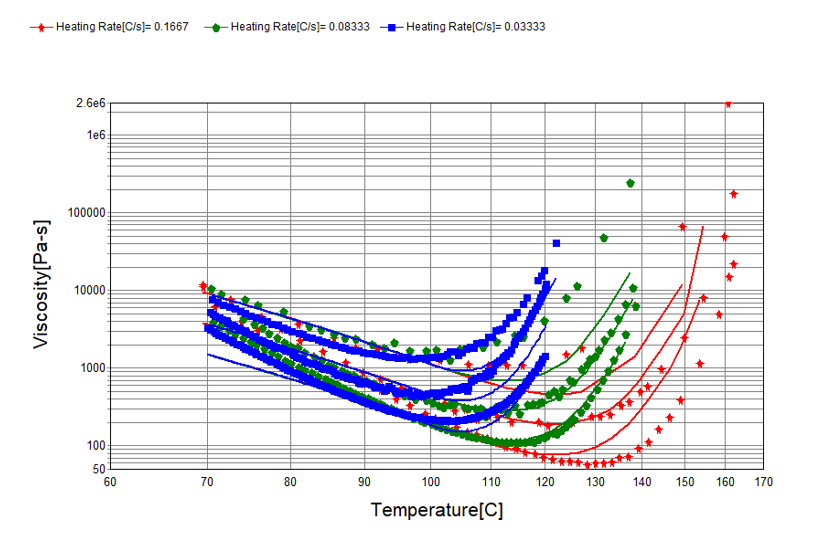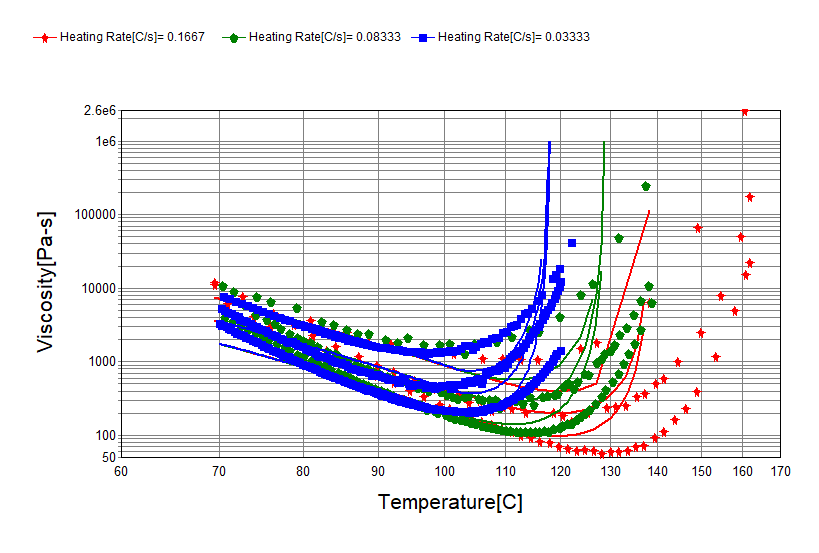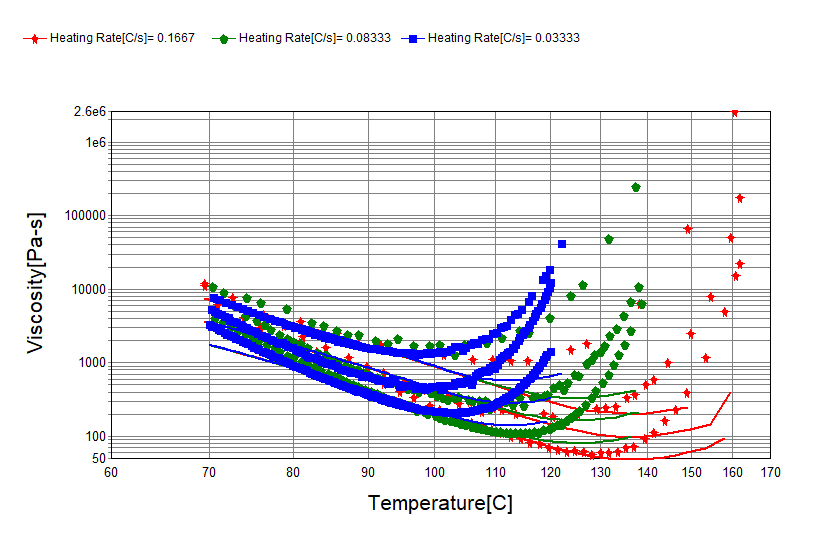Reactive Viscosity Model dialog
The Reactive Viscosity model is used to calculate the viscosity behavior of a thermoset material at various degrees of cure, shear rates and temperatures. See the Reactive Viscosity model for an explanation of the parameters.
Once the Compute Results has been run, the Reactive Viscosity Model should display the fitted coefficients.

Use the Plot button to view the result of the fit.

Reactive Viscosity Pre-Cure
To get the initial viscosity of the thermoset correctly characterized, it is important to match the pre-cure behaviour at the lower temperatures. This is primarily matched by the n, Tau*, B and Tb coefficients.
Reactive Viscosity Post-Cure Onset
The onset of cure is dependent on the fitted Cure Kinetics model and the Gelation Conversion value, while the sharpness of the viscosity rise during cure is dependent on the C1 and C2 parameters. Sometimes, as the optimization method works to minimize the difference between the raw data and the fit, the C1 and C2 parameters produce an irregular fit. When this occurs, manually adjust the C1 and C2 values to produce smoother rises in reactive viscosity.
IMPORTANT When you select Basic as the input type, the model cannot incorporate the impact of curing on the reactive viscosity, and C1 and C2 are set to zero.
Gelation Conversion Influence
The Gelation Conversion is the level of conversion at which the resin stops flowing. It is coupled with the reactive polymer viscosity models to determine the instant when viscosity becomes infinite.
If the Gel Time and Gel Time Temperature have been specified on the Processing and Design dialog, then the Gelation Conversion will be calculated by the Cure Kinetics Model by determining the conversion level that will match the entered Gel Time at the Gel Time Temperature.
If the Gel Time and Gel Time Temperature have not been entered on the Processing and Design dialog, then a default value will be used for the Gelation Conversion. If this is the case or the onset of curing influence isn't well matched in the fitted reactive viscosity, it may be necessary to adjust Gelation Conversion higher or lower.
Example 1 shows the effect of setting the Gelation Conversion to 0.2 instead of the initial value of 0.65:

Example 1 showing the effect of decreasing the Gelation Conversion
Example 2 shows the effect of setting the Gelation Conversion to 0.8 instead of the initial value of 0.65:

Example 2 showing the effect of increasing the Gelation Conversion
Troubleshooting
Depending on the raw data, the fitting algorithm may not produce an ideal fit. If this is the case:
Review the raw data to check for any issues such as the below and remove any suspect data points:
- Overlapping heating runs (for non-isothermal results) or isotherms (for isothermal results)
- Inconsistent dependency of heating rate (non-isothermal results) or temperature (for isothermal results)
If the raw data looks to be ok though the fitting algorithm is still having issues matching the raw data:
- Focus fitting the initial pre-cure Reactive Viscosity data first by setting C1 and C2 to zero and fixing them. Also set the Gelation Conversion to a low value, e.g. 0.05
- Then allow the n, Tau*, B, Tb values to vary and fit the model, which should produce a fit to the initial low cure data
- Now start to introduce the impact of curing by increasing the Gelation Conversion and allowing the C1 and C2 values to vary and refit
In situations where the model isn't capable of matching all section of the raw data, focus the fit on the conditions closer to what will be experienced in the Moldflow simulation, such as higher heating rates, temperatures or shear rates
